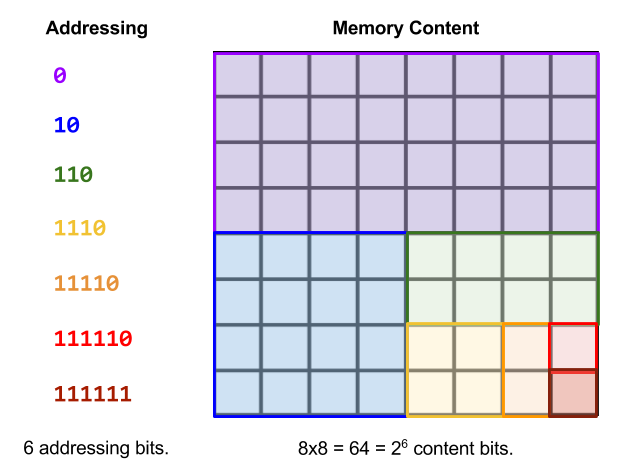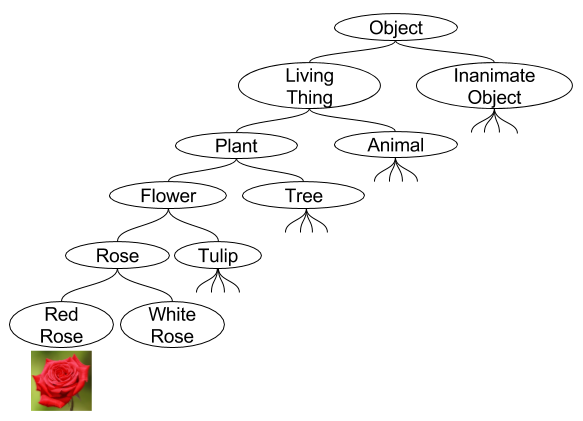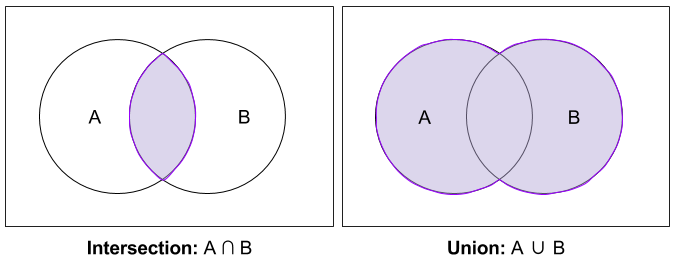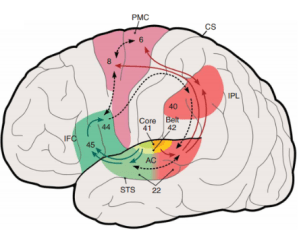Part Of: Algebra sequence
Content Summary: 1800 words, 18 min read
Fundamentals of Sets
Definition 1. A set is a collection of distinct objects.
A few examples to kick us off:
represents the set of fruits which I prefer.
can represent, among other things, the fingers on my left hand.
- The set of natural numbers
.
- The set of integers
.
Sets are subject to the following properties:
- Order blindness:
and
expresses the very same set.
- Duplicate blindness.
. We will prefer to express sets with the latter, more compact, notation.
- Recursion.
is a perfectly valid two-element set, quite distinct from the three-element set
.
Definition 2. Two sets A and B are said to be equal () if A and B contain exactly the same elements.
- Let
and
. Then,
.
- Let
and
. Then,
.
Definition 3. If an object x is an element of (i.e., member of) set S, we write . Otherwise, we write
.
- Let
. Then
means “yellow is an element of the set of primary colors”.
means “-1 is not an element of the natural numbers”.
. The element
is not in
: only the set
is.
Definition 4. For some set , its cardinality (i.e., size)
, is the number of elements in that set.
- Let
. Then
.
- Let
. Then
. Note that cardinality only looks at “the outer layer”.
Definition 5. The empty set (i.e., the null set) is the set containing no elements.
.
.
.
Definition 6. Instead of listing all elements, set builder notation specifies rules or properties that govern the construction of a set. The notation takes the following form: , where the | symbol is pronounced “such that”.
. In words “let A be the set of integers X such that x is greater than zero and less than six.”
- The set of rational numbers
.
Sets defined by their properties are often called set comprehension. Such properties or rules are called the intension, the resultant set is called the extension.
- Let
and let
. Here
, despite their use of different rules. We say that
and
have the same extension, but different intensions.
The intension-extension tradeoff denotes an inverse relationship between the number of intensional rules versus the size of the set those rules pick out. Let’s consider two examples to motivate this tradeoff.
Consider hierarchical addressing in computer architecture. Suppose we have bits of computer memory, each bit of which is uniquely identified with a 6-bit address. Suppose further that our memory has been allocated to data structures of varying size. To promote addressing efficiency, a computer can adopt the following strategy: assign shorter addresses to larger variables.

We can also see the intension vs. extension tradeoff in the memory systems of the brain. Specifically, semantic memory is organized into a concept hierarchy. We might classify a Valentine’s day gift according to the following tree:

The number of objects classified as a RED_ROSE is clearly less than the number of objects classified as LIVING_THING. But as our extensional size decreases, the size of our intension (the number of properties needed to classify a RED_ROSE) increases.
Subsets and Power set
Definition 7. A set is a subset of another set
, written
, if every element of
is also an element of
.
- Let
and
. Then
(recall that element order is irrelevant).
- Let
and
. Then
(C does not contain 9).
- Is
a subset of
? Yes. For all
,
is true.
Definition 8. A set is a proper subset of another set
, written
, if
and
.
Definition 9. For a given set , its power set
is the set of all subsets of
.
- Let
. Then
.
A power set can be constructed by the use of a binary tree, as follows:

As can be seen above, the total number of subsets must be a power of two. Specifically, if , then
.
It is important to get clear on the differences between the element-of ( ) versus subset-of (
) relations. Consider again
and its power set
. But
. The
relation requires the brackets match.
. But
. The
relation requires the “extra bracket”.
Probability theory is intimately connected with the notion of power set. Why? Because many discrete probability distributions have -algebras draw from the power set of natural numbers
.
Cartesian Product, Tuples
Definition 10. Given two sets and
, their Cartesian product
is the set of all ordered pairs
such that
and
. Note that, unlike the elements in a set, the elements of an ordered pair cannot be reordered.
- Let
and
. Then
.
We can represent this same example visually, as follows:

- Contrast this with
. Thus,
. This is because elements within ordered pairs cannot be rearranged.
- Note that
. In combinatorics, this observation generalizes to the multiplication principle.
- The real plane
is a well-known example of a Cartesian product.
Definition 11. Given n sets, , their Cartesian product is the set of all n-tuples.
- Let
,
and
. Now
.
Linear algebra is intimately connected with the Cartesian product operation. Why? Because n-tuples are strongly related to n-dimensional vectors.
Intersection and Union
Definition 12. The intersection of two set and
, written
, is the set of elements common to both sets.
- Let
and
. Then
.
- Let
and
. Then
.
- Let
. Then
.
Definition 13. The union of two sets and
, written
is the set of all elements that are in
or
, or both.
- Let
and
. Then
.
- Let
. Then
.
Venn diagrams represent sets as enclosed areas in a 2D plane. If two (or more!) sets have shared elements, their areas overlap. We can use this technique to visualize sets and their overlap:

We can also use Venn diagrams to represent our intersection and union relations:

Note that . This makes sense in light of the Venn diagram. Adding the cardinality of both sets counts the elements that exist in the middle section twice. To avoid this, we subtract the cardinality of the intersection. In combinatorics, this formula is generalized by the inclusion-exclusion principle.
Difference and Complement
Definition 14. Given two sets and
, their difference
is the set of elements in
but not also in
.
- Let
and
. Then
and
.
- Let
and
. Then
and
.
Definition 15. Given two sets and
, the symmetric difference
is the set of elements in
or
, but not both.
- Let
and
. Then
.
Definition 16. In many set problems, all sets are defined as subsets of some reference set. This reference set is called the universe .
- Let
and let its universe be the set of complex numbers
. It is true that
.
Definition 17. Relative to a universe , the complement of
, written
is the set of all elements of
not contained in
.
- Let U be the set of positive integers less than 10:
and
. Then
.
We can again represent these relations graphically, via Venn diagrams:

Takeaways
Let me summarize this post in terms of our 17 definitions 🙂
- Def
1-5 introduced the notion of set, set equality, the element-of operator, cardinality (set size), and empty set.
- Def 6 introduced set builder notation, and the intension-extension tradeoff.
- Def 7-9 introduced subset, proper subset, and power set.
- Def 10-11 introduced Cartesian product, ordered pairs, and n-tuples.
- Def 12-13 introduced intersection (“and”) and union (“or”), as well as Venn diagrams.
- Def 14-17 introduced difference, symmetric difference (“xor”), and complement (“not”).
Want to learn more? I recommend the following resources:
- Articles: A Little Set Theory (Never Hurt Anybody), Sets, Functions, Relations
- Videos: The Trev Tutor, Discrete Math 1 series
This introductory article focused on promoting intuitions through worked examples. Next time, we’ll look at these same operations more carefully, and examine the relationship between set theory and classical predicate logic.

Kevin,
Nice summary. Heads up on a few typos:
1) Definition 6, bullet 3 – did you mean to swap the + and -?
2) Definition 7 – sets B and C should include a 4.
3) Definition 10, bullets 1 and 2 – something went awry, but not sure what.
LikeLiked by 1 person
Hey Travis,
Appreciate the detailed feedback! All typos have been fixed, I think.
Also, in November, me and another reader are embarking on the textbook “Conceptual Mathematics: A First Introduction to Categories”. https://www.quora.com/What-is-the-best-textbook-for-Category-theory/ If you’re interested in joining, please shoot me an email! 🙂
LikeLike